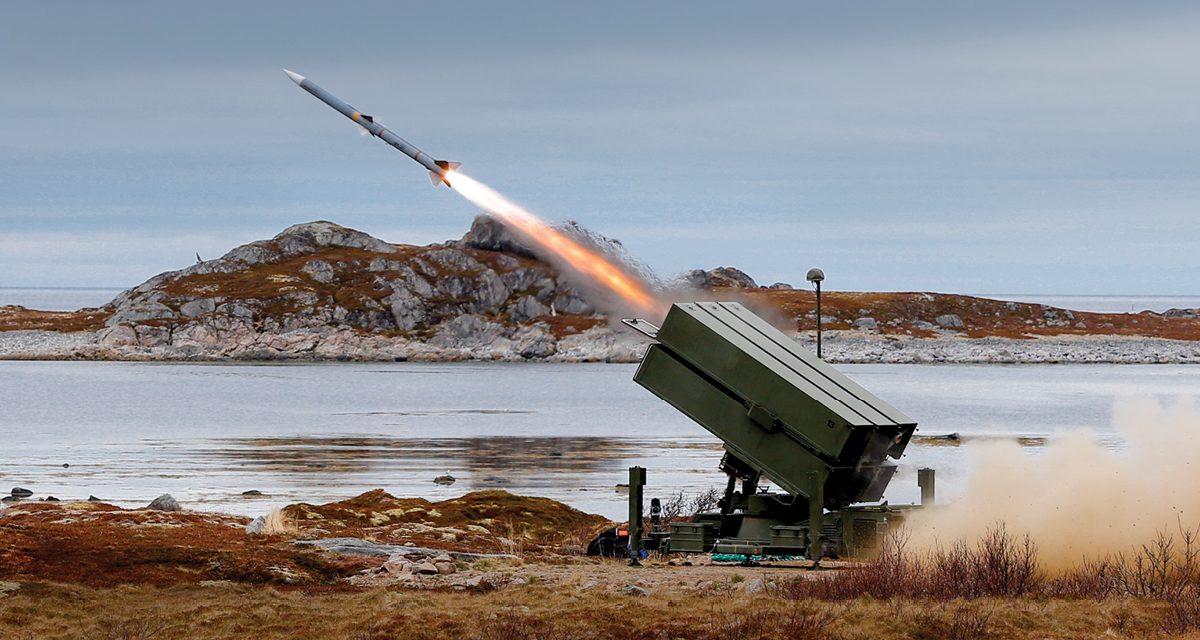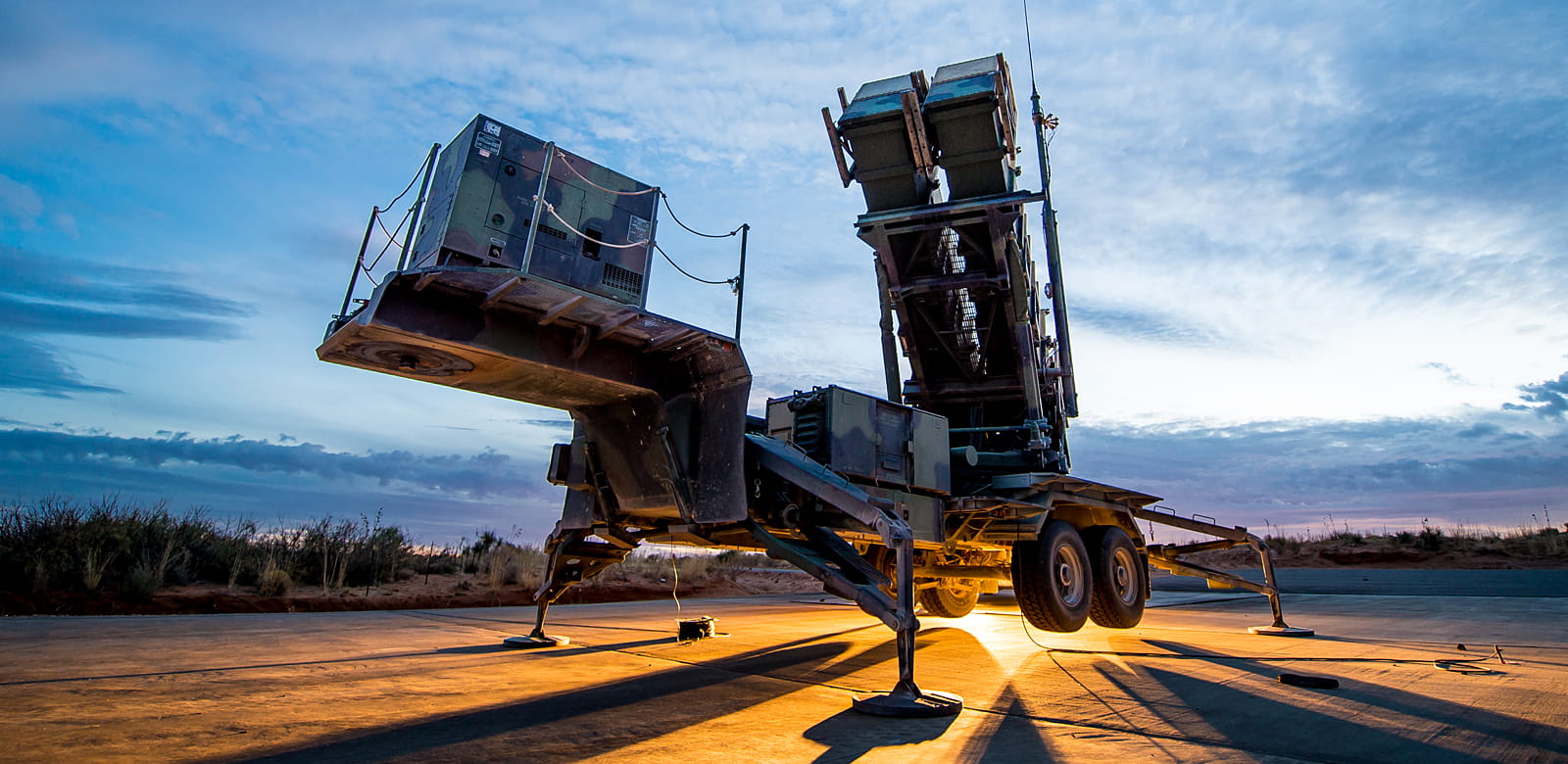
Photo: Courtesy of Raytheon. The National Advanced Surface-to-Air Missile System (NASAMS™).
Air bases stand as crucial pillars of military operations.
Housing advanced aircraft, highly trained personnel and critical military assets, they serve as launchpads for aerial superiority and power projection.
“With the rise of sophisticated adversaries and unconventional warfare, the imperative to fortify U.S. and allied bases has never been more evident,” said Paul Ferraro, president of Air Power at Raytheon, an RTX business.
To safeguard these vital installations from airborne threats such as enemy aircraft, cruise missile raids and drone swarms, the concept of air base air defense has gained paramount importance.
“Air base air defense is not just a necessity – it is our unwavering resolve to ensure the skies remain secure, empowering the U.S. and its allies to defend our interests and maintain air superiority in an ever-changing world,” Ferraro said.
Raytheon is using its decades of integration expertise to provide advanced surveillance, detection and interception systems that form a multi-layered shield around air bases. At the heart of its solution lies the Battle Space Command and Control Center, or BC3, which synchronizes standalone sensors and weapon systems into a cohesive network.
What sets Raytheon’s BC3 system apart from others that also use BC3 is the company’s exclusive decision aid software that allows users to adapt and enhance the system according to evolving needs, making it a versatile and future-proof solution.
“Our decision aid software overlaid on top of BC3 acts as the vital link between sensors and effectors to empower warfighters to make faster, optimal decisions in engaging hostile threats,” said Glenn Ouyang, who leads Mission Integration Systems for Domain Awareness and Precision Strike at Raytheon.
Simply put, “Raytheon’s BC3 is the super glue that combines sensors and effectors into an effective force that is greater than the sum of its parts,” Ouyang said.
How integrated air defense systems work:
Sense: Sensors like the Early Warning Radar or Sentinel radar first observe a potential threat and a track appears on the operator’s screen.
Decide: Raytheon uses artificial intelligence and machine learning as decision aids that allow the operator to identify a track as friendly or hostile.
Effect: If a track is identified as hostile, Raytheon’s decision aids use algorithms to quickly recommend multiple options for engaging with different weapons based on the threat’s physical aspects and trajectory kinematics.
“Our decision aids allow the operator to optimize threat engagement along predictive trajectories, ultimately maximizing the overall effectiveness of the system,” Ouyang said.
With these decision aids, the operator can avoid situations where multiple missiles are unnecessarily used to engage a threat. Simultaneously, these decision aids give the operator numerous opportunities to engage a threat based on its predictive trajectory, thereby minimizing the risk of a penetrating threat.
Tested twice – proven reliable
Raytheon has successfully integrated the Early Warning Radar, NASAMS air defense system and Patriot air defense system with the Qatar Air and Missile Defense Operations Center, or ADOC. This integrated air defense system is cybersecure based on the latest U.S. Department of Defense requirements for the Middle East.

The Patriot air defense system (shown here), NASAMS air defense system and Early Warning Radar are integrated with the Qatar ADOC.
In 2022, Raytheon and Kongsberg Defence & Aerospace partnered with the Air Force Research Laboratory Strategic Development Planning and Experimentation, or SDPE, office to demonstrate the system in Andoya Norway.
During the test, a U.S. Army radar passed targeting information to Raytheon’s BC3, which relayed key data to the KDA Fire Distribution Center for threat evaluation and weapon assignment. The center’s operator used this information to launch the most suitable missile for each target from the NASAMS multi-missile canister, engaging cruise missile targets at different distances with the AIM-9X SIDEWINDER missile, AMRAAM missile and AMRAAM-Extended Range missile.
“This experiment proves our system’s maturity and real-world effectiveness,” Ouyang said. “It goes beyond theoretical potential, showcasing our capability to seamlessly combine various components and deliver tangible results.”

An AIM-9X SIDEWINDER missile is fired from a NASAMS air defense system during the SDPE demonstration in Andoya, Norway.
Rapid delivery
Raytheon relied heavily on the Agile process to incrementally design, develop and test the ADOC system’s software, facilitating faster delivery and cost efficiencies.
This approach enables customers to weigh in throughout design and development – and it allows engineers to address that feedback along the way.
The company’s mature design will be key in delivering the system quickly.
“In the realm of air base air defense, time is the decisive factor that separates vulnerability from victory,” Ferraro said. “Swift delivery of a solution is key to fortifying our bases, protecting our forces and staying one step ahead of emerging threats.”





















